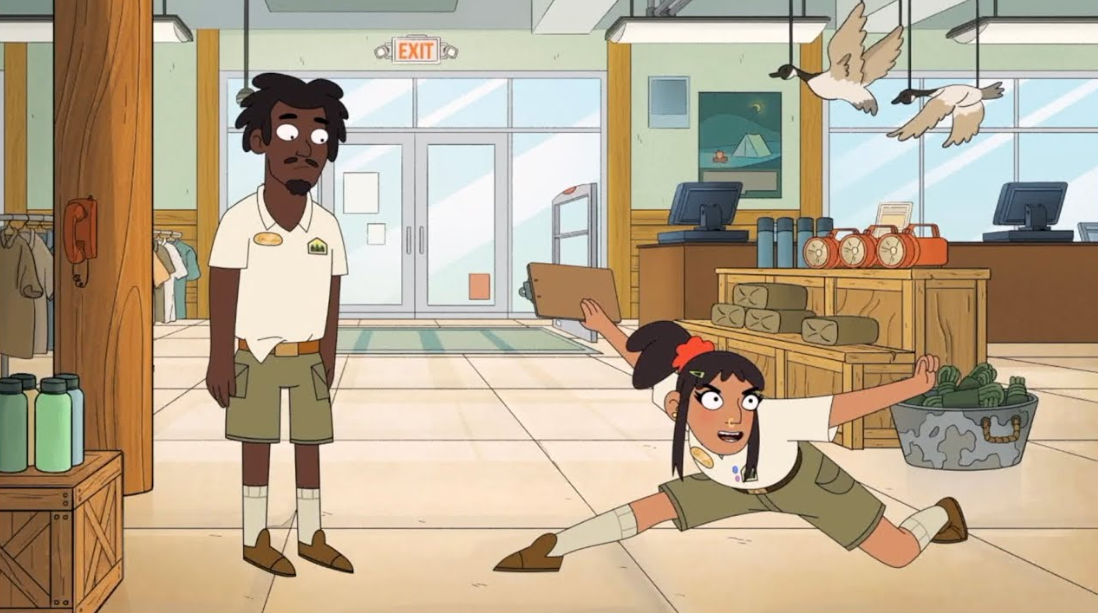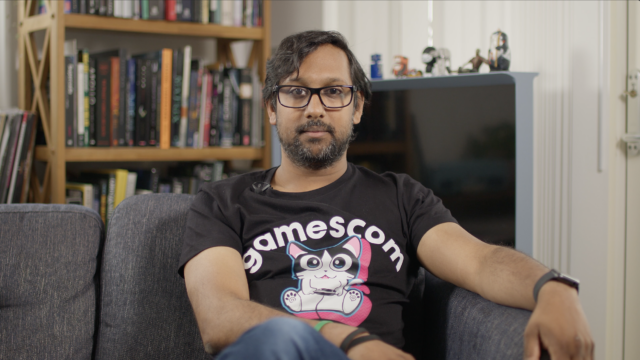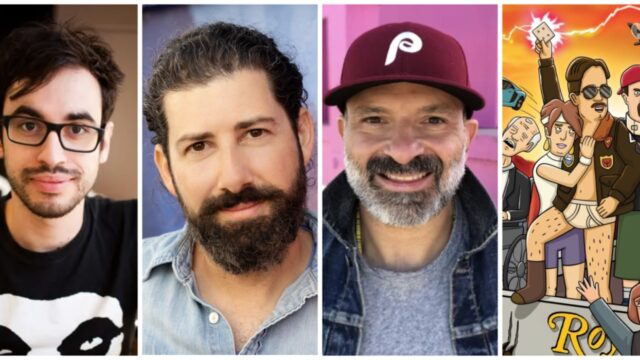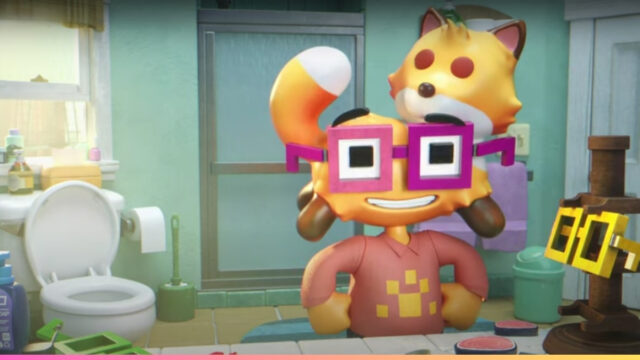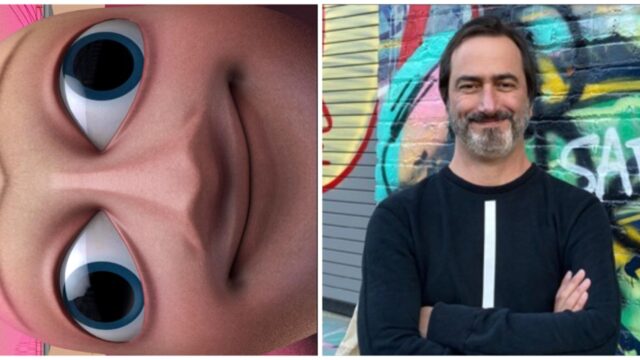Exclusive Interview: Studio Smokescreen Co-Founder Kris Wimberly

It’s a huge pleasure to introduce you to Studio Smokescreen, a Black-owned animation studio that last week unveiled it’s first animated short, Tent Sale, which you can watch here.
The short is a showcase for what Studio Smokescreen is capable of doing – and shows off the exciting vision of founders Kris Wimberly and Chase Wimberly: to discover, support, train and prepare young animation talent from marginalized and underrepresented communities. The goal is not only to become a vibrant animation studio in its own right, but also to contribute to greater diversity in the animation industry as a whole.
Recently we had a chance to talk with co-founder Kris Wimberly to talk about the new short and the vision of Studio Smokescreen.
John Schwarz: Hi Kris, can you tell us a little bit about yourself? Where are you from and how did you get into animation?
I’m actually from Southern California. I grew up in Orange County, not far from Disneyland. I was always into animation given that I literally grew up with the invention of cable TV. I got to watch the different networks fill enormous voids of space with tons of animated content, so I just devoured it — Saturday mornings, weekdays after school, even mornings before school! I watched how TV for kids went from collections of animated featurettes originally shown in front of movies in the theaters, like your Looney Tunes, Tom & Jerry, and other various Hanna-Barbera cartoons, to original shows and spin-offs of movies. I loved all of it, and I wanted to do it as a profession all my life.
What are some of your favorite animated series either now or from your past that you feel has influenced you in some way, especially with this short?
Well, I was a HUGE fan of shows like Looney Toons and Tom & Jerry because I loved the short powerful blasts of comedy. Later, as I learned about storyboarding and cartooning, I got to see how the storyboard artists really made the jokes feel punctuated through such visually emotional drawings. That also translated into writing and timing of well executed jokes. So more contemporary shows like the original Ren & Stimpy Show, SpongeBob SquarePants and others really stuck with me and drove me into becoming a storyboard artist. I’ve been really lucky to work on many shows that allowed me to tap into those principles of animation that really excite me, so i feel like this short has a lot of influence from those shows and others I’ve worked on.
How did the idea of Tent Sale come about?
Actually, it was a happy accident at first. I often teach storyboarding classes, and as a giveaway for attendees, I was offering a freshly written, industry level script by a full-fledged animation writer to use as practice for storyboarding. When I approached my friend Jeremy Shipp to do it, I gave him character designs of a guy and girl and asked him to come up with something. He’s a hilarious, seasoned animation writer, and he gave me a short list of maybe 6 scenarios for the two characters. They were all strong, but one leapt out at me and I knew he could really make that one funny. I ask him to write that short script with one small tweak, and Jeremy came out with a script that blew me away. Like, I don’t even think he meant to make it so great. It was supposed to just be enough to be a solid exercise for budding storyboard artists. Separately, at Smokescreen we were all really itching to make our own short alongside our other vendor projects, completely top to bottom from development to delivery. Ironically, since this script was written when I really wanted to make something fun, I totally saw what the short could be, and I told Jeremy, “I’m going to actually produce this.” I don’t know what he thought of that at the time, but he was sure blown away by it by the end.
What were some visual inspirations for the look and aesthetics of the short?
The goal of the short was to hit multiple targets with one arrow. I wanted to make something that felt fun and quirky like the cartoons I loved so much, with a vibe of something that could fit the Primetime slate. Ultimately, the purpose was to make something to act as a calling card for the industry to know what Studio Smokescreen can do. With that, I pulled from a lot of my own experiences working on a myriad of shows, and hiring the right people to achieve those targets like Andrea Mercado on the storyboards and Amanda Turnage as the Art Director. I think they both knocked it out of the part by bringing their own tastes and experience as well.
Talk about some of the voice cast you got to bring in and work with, and what were you looking for in the development of your voice cast?
It was important to me to cast true to the roles, and direct them carefully. So, we literally put out a call for both a Black male and a Southeast Asian woman to play the roles respectively. Then, we hired my friend G.K. Bowes who is a long time Voice Over Artist and current Voice Director to come onto the project to help guide the voices. Everyone really brought their A-game and loved and believed in the short.
What do you think Tent Sale can become down the line, is the show envisioned as a series with potentially multiple seasons and are there ideas on where else to take premise or do you see it as a social series?
I’m grateful to say there is a lot of excitement and buzz around Tent Sale. We’ve had a number of Networks and executives tell us they can already see this as a proof of concept for a show, and want to know the rest so they can buy it. Haha! So, Jeremy and I have been writing out the concept for the full show and we absolutely love it! I think it will definitely satisfy anyone who enjoys the original Tent Sale short.
What kind of projects is Smokescreen looking to take on in the future?
We are excited to be in talks for taking on projects at some of the major studios for TV series as well as features as a partner in producing them. Additionally, there is a big desire to hear more of our own show pitches, which is a huge reason for Studio Smokescreen to exist. We want to be able to show and tell stories not typically seen in TV animation, made by the people who have lived those narratives and perspectives. By doing that, we hope to move the needle in the greater industry landscape for historically marginalized people in animation both on the screen and behind it.

